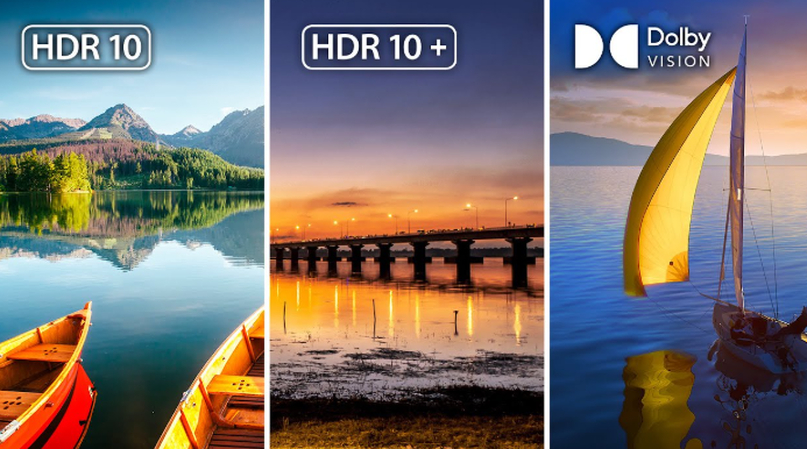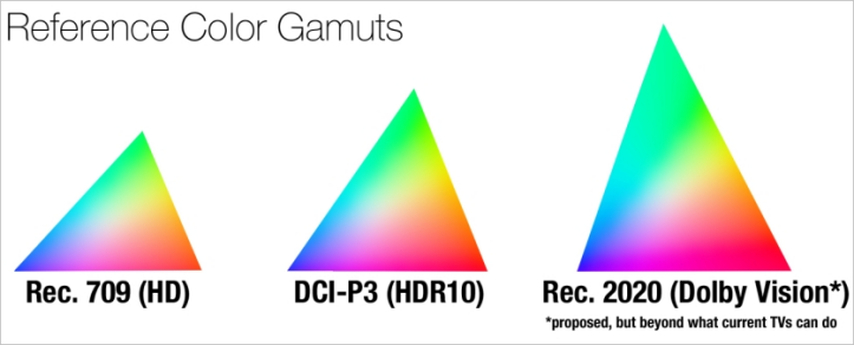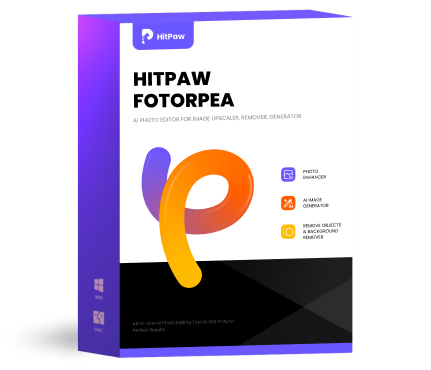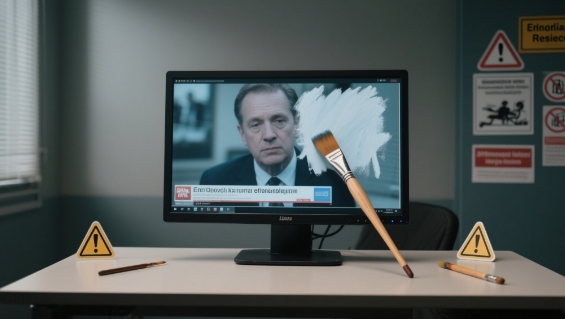HDR10 vs Dolby Vision: Which One Looks Better on Your TV?
"I have an Oled tv and I can't see any difference between Dolby Vision content and HDR content. Is there anybody who can actually see the difference?" -----Reddit
When choosing a premium HDR (High Dynamic Range) format for your home theater, the debate between HDR 10 vs Dolby Vision takes center stage. HDR10 uses static metadata to apply fixed settings across a video, while Dolby Vision leverages dynamic metadata to optimize each scene in real time. With Dolby Vision offering 12-bit color depth (vs HDR10's 10-bit) and peak brightness up to 10,000 nits, compatibility becomes key: only high-end TVs and select streaming titles support it. Meanwhile, HDR10's universal adoption makes it a safe choice for most setups. This article breaks down their pros, cons, and real-world performance to help you decide which format delivers the ultimate viewing experience.
Part 1: What is HDR 10?
HDR 10 is a free and open-source High Dynamic Range (HDR) format developed by the Consumer Technology Association (CTA). Since it's royalty-free, it's the most popular and commonly used HDR format. Almost all televisions with HDR feature support the HDR10 standard. In fact, most streaming services support HDR 10 by default.
The "10" in HDR 10 represents 10-bit color depth, which translates to 1 billion colors, ultimately increasing the range of colors between darkest blacks and brightest whites. As a result, HDR10 videos produce brighter highlights, deeper blacks, and vivid colors. HDR10 offers peak brightness of 1,000 nits.

Part 2: What is Dolby Vision?
Dolby Vision is a premium HDR format developed by Dolby Laboratories and offers a radically superior picture quality compared to other HDR standards. Dolby Vision supports 12-bit color depth, which translates to a whopping 68 billion colors. The standard also offers peak brightness of 10,000 nits. That said, current generation TVs are not designed to utilize the full range of Dolby Vision. In fact, modern TVs peak around 1,000 to 4,000 nits in brightness and are barely equipped with 10-bit screens. Nevertheless, advancements in manufacturing technology are catching up to Dolby Vision, making it the HDR standard of the future.
Since Dolby Vision is proprietary tech, content creators, content providers, and device manufacturers must license it from Dolby. Therefore, Dolby Vision is generally found in the higher-end devices and services.

Part 3: HDR10 vs. Dolby Vision: Key Differences

There is many a difference between Dolby Vision and HDR10. The former is proprietary tech and the latter is open-source. Their approaches and philosophies to HDR are vastly different and so are the quality of output they deliver. Here are some of the key differences you should know:
- Metadata
- Color Depth
- Peak Brightness
- Content Availability
- Viewing Experience
HDR10 uses static metadata, which means that the quality settings are consistent throughout the video. The brightness and color information remain the same throughout the video, irrespective of the scene. While the quality settings remain consistent, the picture quality itself varies from one scene to another due to changes in scenes.
Dolby Vision, on the other hand, uses dynamic metadata. It enhances the video frame by frame and scene by scene. As a result, the quality of each frame and scene is improved to the maximum possible limit. Viewers get a drastically improved viewing experience, as the pictures on the screen feel more "real."
As discussed before, HDR10 supports 10-bit color depth, which produces 1 billion colors. Compared to regular HD TVs, that's a leap in picture quality. However, Dolby Vision's 12-bit color depth produces 68 billion colors, delivering smoother gradients. Beware, though, modern televisions still cannot utilize the 12-bit color depth.
While HDR10 taps out at 1,000 nits brightness, Dolby Vision sails smoothly to a 10,000 nits theoretical limit. And the number is theoretical because most modern TVs do not offer such high brightness. They usually peak at 1,000-to-4,000 nits.
Since Dolby Vision is a premium HDR standard with licensing fees, few content creators and publishers incorporate it in their products. Even on streaming services, only a small number of titles support Dolby Vision. However, HDR10 content is widely supported.
The improvement over SDR content is immediately noticeable with superior contrast, deeper color range, and brightness. However, Dolby Vision really hits the ball out of the park in terms of tone mapping and color accuracy. Thanks to dynamic metadata and frame-by-frame quality enhancement, the picture quality remains consistent throughout the video. When the screens support it, Dolby Vision's output is pure magic for discerning TV viewers.
Part 4: HDR10 vs. Dolby Vision: Comparison Chart
| Feature | HDR10 | Dolby Vision |
|---|---|---|
| Metadata | Static: same settings for the entire video | Dynamic: optimizes quality per scene/frame |
| Bit Depth | 10-bit (1.07 billion colors) | 12-bit (68.7 billion colors) |
| Peak Brightness | Up to 1,000 nits | Up to 10,000 nits |
| Pricing | Open-source and royalty-free | Premium. Requires a Dolby license. |
| Content Mastering | Common baseline for HDR content | Premium mastering; quality optimization adapts to the screen's capabilities. |
| Device and Streaming Support | Almost all HDR-capable devices and streaming services. | Limited to premium devices, premium streaming plans, and fewer titles. |
| User Experience | Good HDR quality | The best HDR quality |
Part 5: Dolby Vision HDR vs. HDR10: Which is Better for You?

The choice between Dolby Vision and HDR10 is not a one-size-fits-all solution. The battle between the two competing standards must seem like a one-sided clash. After all, by now, it must be clear to you that Dolby Vision is hands down the superior HDR standard in terms of sheer quality viewing experience. It produces richer colors and radically superior, realistic pictures on screens that support it. However, things get more complicated when you throw in real-life considerations.
Is Dolby Vision better than HDR10? Sure, Dolby Vision is theoretically superior, but few consumer TVs support the format. The same stands true for content. Few TV shows and movies are available in Dolby Vision HDR standard. At the same time, all TVs with HDR and all streaming services support HDR10 by default. In fact, any screen or streaming service that supports Dolby Vision also supports HDR10. Its unmatched compatibility makes it the right choice for most content creators.
If you're creating Dolby Vision content, you're practically targeting audiences with higher-end devices or streaming service subscriptions. This limits the size of your audience. Creating HDR10 content broadens your viewer base, albeit at the cost of loss of quality consistency.
Bonus: How to Upscale Video from SDR Content to HDR
While it's easy to convert HDR content to SDR, the opposite is not so much. After all, you're trying to add details to an SDR video to make it HDR. But that's precisely the task at which HitPaw VikPea excels. VikPea's AI-powered upscaling models can radically boost the quality of your SDR content. It adds high-definition detail to standard definition videos to make them immersive.
Why Choose HitPaw VikPea For Enhancing SDR content to HDR
- 8K Upscaling: VikPea brings out more detail and sharpness in videos to boost resolution to 8K.
- 30+ Formats: VikPea upscales and enhances videos from cameras, phones, laptops, CCTV, and other sources.
- Batch Processing: VikPea can enhance thousands of videos in a single session with a few button clicks.
- Auto Upscaling: Let AI do everything from removing blurs to stabilizing video to HDR upscaling.
- Fine Polishing: Get rid of grains, dots, lines, artifacts, and other noises without any technical skills.
- Real-time Previews: Get previews of HDR upscaling before converting SDR content to HDR.
Guide on How to Upscale SDR to HDR Video with HitPaw VikPea
- Step 1: Activate the SDR to HDR Feature
- Step 2: Preview Enhanced HDR Video
Install HitPaw VikPea on your Windows or Mac desktop >> Launch it >> Drag your SDR video into VikPea directly or use the 'Choose File' button to import it >> From the left menu bar, choose 'AI Color Module' >> Select 'SDR to HDR.'

The AI automatically detects imported video and converts it from SDR to HDR. Click 'Play' to compare SDR content with HDR output. Once you are satisfied with the effect, just click Export button to save the enhanced videos.

FAQs on Dolby Vision HDR Vs HDR10
Q1. Is Dolby Vision always better than HDR10?
A1. Yes, Dolby Vision offers a superior viewing experience compared to HDR10 as long as your device and content support it. However, there aren't a lot of TV models and content developed for Dolby Vision.
Q2. Can I upgrade HDR10 content to Dolby Vision?
A2. No. You cannot directly update HDR10 content to Dolby Vision. However, if you have the original raw footage of the video, you can master it to Dolby Vision HDR standards. Of course, you'll need licensing from Dolby to do that. That said, some TVs simulate Dolby Vision-style enhancements to make content feel like it's Dolby Vision HDR content, but the quality is not on par with the actual Dolby Vision content.
Conclusion
Dolby Vision gives the best picture quality with brighter colors and more detail in every scene. It changes the picture from scene to scene, so everything looks just right. HDR10 is not as advanced, but it still looks great and works on almost all TVs and services. If you want the best-looking videos and have a high-end TV, choose Dolby Vision. If you want something that works for everyone, HDR10 is the better choice. If you're looking to turn your SDR videos to HDR, HitPaw VikPea is the perfect choice. It turns regular videos into immersive content worthy of big-screen viewing. Check it out today.










 HitPaw Univd (Video Converter)
HitPaw Univd (Video Converter) HitPaw VoicePea
HitPaw VoicePea  HitPaw FotorPea
HitPaw FotorPea



Share this article:
Select the product rating:
Daniel Walker
Editor-in-Chief
This post was written by Editor Daniel Walker whose passion lies in bridging the gap between cutting-edge technology and everyday creativity. The content he created inspires the audience to embrace digital tools confidently.
View all ArticlesLeave a Comment
Create your review for HitPaw articles